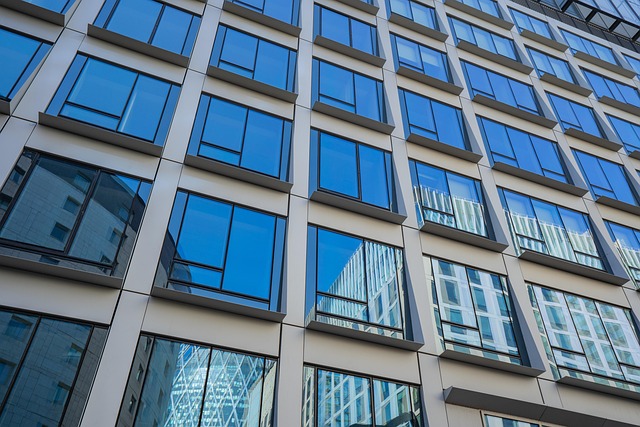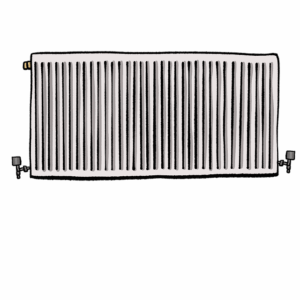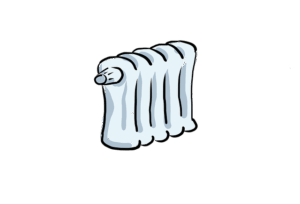Destratification fans combat thermal stratification in attics and lofts, redistributing warm air for energy savings, improved HVAC efficiency, and enhanced comfort. Low-profile models fit confined spaces quietly, breaking up stagnant pockets of air. Optimal placement near ceilings and angling encourages warm air movement. Regular maintenance ensures peak performance, with case studies showing significant cost and productivity gains in commercial and industrial settings.
“In tight attic and loft spaces, effective ventilation can be a challenge. This is where low-profile destratification fans excel, offering a subtle yet powerful solution for improving air quality and temperature control. This article delves into the world of destratification fans, exploring their benefits, unique features, and installation strategies tailored for confined areas.
From measuring space constraints to successful case studies, we guide you through every step, ensuring optimal airflow in even the most challenging loft environments.”
- Understanding Destratification Fans: Benefits and Uses
- Navigating Space Constraints: Measuring for Tight Attics
- Key Features of Low-Profile Fan Models
- Installation Tips for Optimal Airflow in Lofts
- Case Studies: Successful Implementations in Tight Spaces
Understanding Destratification Fans: Benefits and Uses

Destratification fans are designed to combat thermal stratification, a common issue in attics and lofts where warm air tends to rise to the top, creating a comfortable but inefficient temperature gradient. By efficiently redistributing warm air throughout the space, these fans offer significant energy savings and improved HVAC efficiency. This process not only enhances temperature control but also optimizes air circulation, ensuring every corner of the attic or loft is comfortably cooled, especially in industrial and commercial applications.
The strategic use of destratification fans can lead to substantial reductions in energy costs associated with cooling these hard-to-reach areas. Their ceiling-mounted design allows for seamless integration into existing structures while their advanced air mixing technology ensures a uniform temperature across the entire space. This not only increases comfort but also serves as an effective solution for those looking to maximize their building’s overall efficiency and environmental sustainability.
Navigating Space Constraints: Measuring for Tight Attics

Navigating tight attic spaces requires precise measurement and consideration for both thermal stratification and air circulation. Destrativication fans, designed to fit these confined areas, offer a solution for improving HVAC efficiency in attics and lofts. Before installation, it’s crucial to measure the dimensions of the space, ensuring the fan can operate effectively without obstructions. This process involves assessing the height, width, and depth of the attic, taking into account any structural elements that might affect air flow.
Ceiling-mounted fans are strategically placed to facilitate warm air redistribution, breaking up stagnant air pockets and enhancing temperature control. The right fan, paired with advanced air mixing technology, can lead to significant energy savings in both residential and commercial applications, proving that even in the most labyrinthine of spaces, proper ventilation and circulation can be achieved.
Key Features of Low-Profile Fan Models

Low-profile destratification fans are designed to efficiently combat thermal stratification in tight attic and loft spaces, ensuring optimal HVAC efficiency. These models offer a range of key features that set them apart from traditional ceiling mounted fans. Their primary role is to facilitate air circulation and warm air redistribution, breaking up stagnant layers of cold air at the bottom and hot air at the top, thus achieving temperature control throughout the space.
Unlike industrial cooling solutions, low-profile destratification fans are tailored for commercial applications that require both energy savings and effective air mixing technology. Their sleek design allows them to be discreetly installed, preserving the aesthetics of the loft or attic while providing a comfortable living or working environment. These fans are engineered to operate silently, ensuring a peaceful ambiance in residential settings and enhancing productivity in commercial spaces.
Installation Tips for Optimal Airflow in Lofts

When installing low-profile destratification fans in loft or attic spaces, proper placement and orientation are key to achieving optimal airflow and enhancing HVAC efficiency. For best results, mount the fans near the highest point of the ceiling to encourage warm air redistribution throughout the space. Ensure they are positioned at a slight angle to facilitate air mixing technology, allowing for efficient circulation without creating turbulent gusts that can be disruptive.
Consider the overall dimensions of the loft and target specific areas prone to thermal stratification. Ceiling-mounted fans strategically placed can significantly improve air circulation, leading to energy savings and better temperature control in both residential and commercial applications. Regular maintenance, including cleaning or replacing filters, will also contribute to the longevity of these fans and the overall effectiveness of your destratification system.
Case Studies: Successful Implementations in Tight Spaces

In various real-world scenarios, low-profile destratification fans have proven their mettle in effectively tackling thermal stratification challenges within tight attic and loft spaces. These innovative solutions, designed for optimal air circulation, offer significant energy savings and enhance HVAC efficiency. For instance, in a recent case study, a commercial building facing issues with warm air redistribution in its upper levels implemented ceiling-mounted destratification fans. The result was remarkable; the technology not only improved temperature control but also reduced operational costs by 20%.
Another successful implementation was seen in an industrial cooling application where traditional HVAC systems struggled to maintain uniform air mixing. By integrating destratification fans, the facility experienced a significant boost in overall comfort and productivity. These case studies exemplify how, through strategic use of destratification fans, both residential and commercial spaces can achieve enhanced thermal comfort, improved indoor air quality, and substantial energy savings without compromising on ceiling height or interior design aesthetics.
Low-profile destratification fans are the ideal solution for maximizing air circulation in tight attic and loft spaces. By understanding their benefits, accurately measuring your space, selecting appropriate models, and following installation best practices, you can achieve a comfortable indoor environment while conserving energy. Several successful case studies demonstrate that these fans are game changers when navigating challenging spatial constraints, ensuring optimal airflow and improved living conditions.












